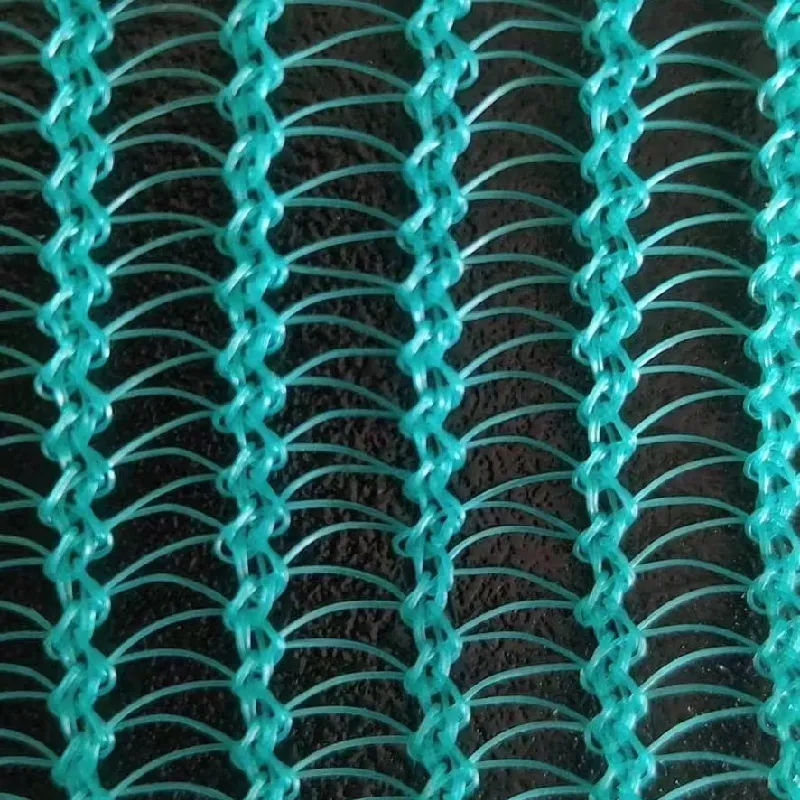7 月 . 11, 2024 01:38
Back to list
Synthetic mesh material is similar to plastic net with similar functionality.
Plastic netting, also known as plastic mesh, is a versatile and widely used material in various industries. It is made from plastic polymers such as polyethylene, polypropylene, and PVC, which make it lightweight, durable, and flexible. Plastic netting comes in a variety of colors, sizes, and shapes, making it suitable for a wide range of applications.
One of the most common uses of plastic netting is in gardening and agriculture. Gardeners often use plastic netting to support climbing plants like tomatoes, cucumbers, and beans. The netting provides a structure for the plants to grow on, keeping them off the ground and allowing better air circulation and sunlight exposure. It also helps protect the plants from pests and diseases.
In agriculture, plastic netting is used for crop protection, such as covering fruit trees to prevent birds from eating the fruit or protecting crops from wind and hail damage. It can also be used to create trellises for vineyards or to support young trees in nurseries.
Plastic netting is also commonly used in the construction industry. It can be used as a safety barrier on construction sites to prevent accidents or as a temporary enclosure for fencing off areas. Plastic netting is lightweight and easy to install, making it a convenient choice for temporary applications.
Another popular use of plastic netting is in the packaging industry

plastic net. It is often used as protective packaging for fragile items such as fruits, vegetables, and electronics. The netting provides cushioning and protection during shipping and handling, reducing the risk of damage or breakage. In the fishing industry, plastic netting is used to make fishing nets and traps. The lightweight and durable nature of plastic netting make it ideal for capturing fish while minimizing harm to the environment. It is also used for aquaculture, such as in fish farms to contain and protect fish stocks. Plastic netting is also used in the automotive industry for various applications, such as in car seats for ventilation and support, and in engine filters for air and fluid flow control. It is also used in the manufacturing of industrial filters for air and liquid filtration. Environmental concerns have led to the development of biodegradable plastic netting made from plant-based materials such as cornstarch. These eco-friendly alternatives are becoming increasingly popular as more industries strive to reduce their carbon footprint and impact on the environment. Overall, plastic netting is a versatile material with a wide range of applications across various industries. Its lightweight, durable, and flexible properties make it an ideal choice for a variety of uses, from gardening and agriculture to construction and packaging. As technology advances and environmental consciousness grows, we can expect to see even more innovative uses for plastic netting in the future.

plastic net. It is often used as protective packaging for fragile items such as fruits, vegetables, and electronics. The netting provides cushioning and protection during shipping and handling, reducing the risk of damage or breakage. In the fishing industry, plastic netting is used to make fishing nets and traps. The lightweight and durable nature of plastic netting make it ideal for capturing fish while minimizing harm to the environment. It is also used for aquaculture, such as in fish farms to contain and protect fish stocks. Plastic netting is also used in the automotive industry for various applications, such as in car seats for ventilation and support, and in engine filters for air and fluid flow control. It is also used in the manufacturing of industrial filters for air and liquid filtration. Environmental concerns have led to the development of biodegradable plastic netting made from plant-based materials such as cornstarch. These eco-friendly alternatives are becoming increasingly popular as more industries strive to reduce their carbon footprint and impact on the environment. Overall, plastic netting is a versatile material with a wide range of applications across various industries. Its lightweight, durable, and flexible properties make it an ideal choice for a variety of uses, from gardening and agriculture to construction and packaging. As technology advances and environmental consciousness grows, we can expect to see even more innovative uses for plastic netting in the future.
Latest news
-
The Versatility of Stainless Steel Wire MeshNewsNov.01,2024
-
The Role and Types of Sun Shade SolutionsNewsNov.01,2024
-
Safeguard Your Space with Effective Bird Protection SolutionsNewsNov.01,2024
-
Protect Your Garden with Innovative Insect-Proof SolutionsNewsNov.01,2024
-
Innovative Solutions for Construction NeedsNewsNov.01,2024
-
Effective Bird Control Solutions for Every NeedNewsNov.01,2024












